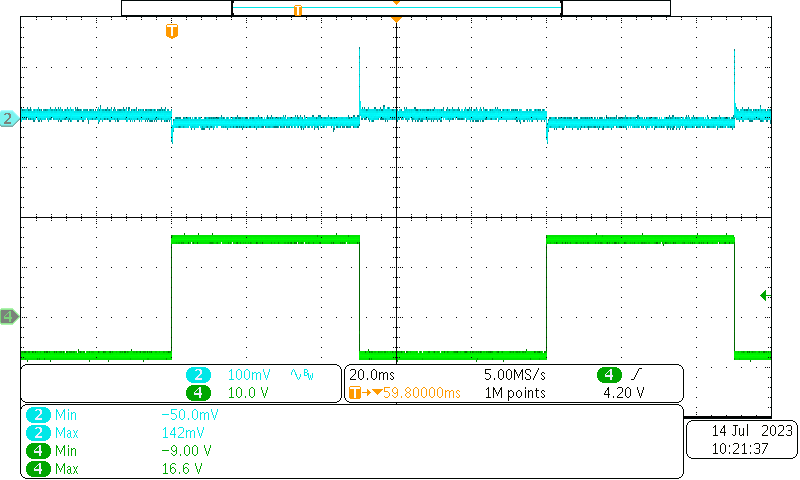TIDT356 October 2023
- 1
- Description
- Features
- Applications
- 1Test Prerequisites
- 2Testing and Results
- 3Waveforms
3.2.2 −8-V Output at 12.4-V Input Voltage and 50% Duty Cycle Switching

Ch2: AC-coupled −8-V output voltage,
bandwidth limited (20 MHz) [scale: 100 mV / div, 20.0 ms / div]
Ch4: 10-kHz Gate drive switching waveform using the 15-A gate drive output [scale: 10.0 V / div, 20.0 ms / div]
Figure 3-11 Load Transient Behavior of the
−8-V Output at 12.4-V Input Voltage and 50% Duty Cycle SwitchingCh4: 10-kHz Gate drive switching waveform using the 15-A gate drive output [scale: 10.0 V / div, 20.0 ms / div]